Down the phone, Helina is explaining what a haul girl is to me. "Basically, you go out shopping for clothes or beauty products," she says, "then you make a haul video and show viewers on YouTube what you got. You go through the items of clothing one by one. I guess what people get out of them is not showing off, like, how much money you've got or anything, but lifestyle: you get to see how one person lives, what their taste is."
If you're minded to sneer at a youth cult that involves making videos about your shopping, then Helina has a pretty intriguing counter-argument. "It's not just about showing what you've got," she says. "It's a whole creative process behind the videos as well, which is what I enjoy about it. Choosing the right music, going from the filming to the editing. Sometimes I even storyboard things, because I want certain shots, how I can present different items and things like that." Besides, she says, it's a genuine community. She thinks a lot of haul girls "turn the camera on because it's a way to talk to people without having to go outside and face their fears. I know that was the case with me: I turned on my camera because I was at home, signed off work, sick, and really bored. And it helped with my confidence in a way. There's this community where you can talk to like-minded people."
I've ended up talking to Helina because haul girls and their videos are currently a remarkably big deal – there are scores of the things on YouTube – and I'm trying to investigate the state of youth subcultures in 2014. It seems a worthwhile thing to do. You hardly need a degree in sociology to realise that something fairly dramatic has happened to them over the past couple of decades; you just need a functioning pair of eyes. When I arrived at secondary school in the mid-80s, the fifth and sixth forms, where uniform requirements were relaxed, looked like a mass of different tribes, all of them defined by the music they liked, all of them more or less wearing their tastes on their sleeves. There were goths. There were metallers. There were punks. There were soulboys, at least one of whom had made the fateful decision to try and complete his look by growing a moustache, the bum fluff result pathetic in the extreme. There were Morrissey acolytes, and even a couple of ersatz hippies, one of whom had decorated his Adidas holdall with a drawing of the complex front cover of Gong's 1971 album Camembert Electrique: a pretty ballsy move, given the derision that hippies had suffered during punk, and at the hands of the scriptwriters of The Young Ones.
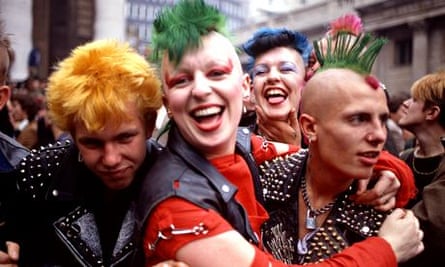
And I seem to recall there were dozens of psychobillies, the dimly remembered 80s youth cult that opted for a cartoonish marriage of punk and rockabilly. That may be my memory suggesting they were more numerous than in reality, simply because they looked so striking, your average psychobilly having contrived to attain a look that was simultaneously utterly ridiculous and disquietingly hard and menacing. I definitely remember one of them turning up on non-uniform day wearing a giant banana costume and Doc Martens, presumably in tribute to psychobilly heroes King Kurt's then-recent single Banana Banana. It was fairly obvious who was who and what was what. You didn't have to be an expert in the finely nuanced semiotics of teenage dress codes to work out that the bloke with the vertiginous dyed quiff walking around dressed as a banana probably wasn't cut from the same subcultural cloth as the bespectacled cardigan-wearer carrying a copy of the Complete Works of Oscar Wilde. And that was just my school. Beyond its gates, style magazines were always reporting on weirder, more arcane youth cults: at one point in the 80s, the Face ran a slightly incredulous piece on "psychedelic scalls", scouse casuals with a love of dope-smoking and Frank Zappa. In the late 80s and early 90s, the music weeklies were always being accused of trying to invent youth cults for their own nefarious ends: grebos, romos, fraggles, teen-C.
In 2014, however, the only real teenage cults visible to an outsider, displaying their allegiances by their manner of dress, seem to be metalheads and emos. The former feels like the most deathless youth movement of all, still recruiting new young converts long after being a mod or skinhead has become almost exclusively the province of the middle-aged. The latter seems to have co-opted elements of most of the other spectacular subcultures – goth, metal, punk and indie – under one catch-all term. In the mid-noughties, it even managed to provoke a flicker of old-fashioned folk devil outrage when the Daily Mail proclaimed it the Dangerous Cult Of Teen Suicide. But that's about it.
Something has clearly changed, and over the past week, I've listened to a lot of hypotheses as to why, of varying degrees of plausibility. A sociologist at the University of Sussex, Dr Kevin White, tells me he thinks it has something to do with Britain's changing class structure. Elswehere, there's a rather grumpy "tsk-kids-today" theory that teenagers are now so satiated by the plethora of entertainment on offer that they don't feel the need to rebel through dress or ritual – and a deeply depressing one that people are too worried about their futures in the current financial climate to be creative. And I've had a long and fascinating conversation with historian David Fowler, author of the acclaimed book Youth Culture in Modern Britain, who has an intriguing, if controversial, theory that subcultures such as hippy and punk had very little to do with the actual teenagers who participated in them – "They were consumers … they were sort of puppets" – and were instead informed and controlled by a slightly older, university-educated generation. "Youth culture as a kind of transformative, counter-cultural philosophy, it has to be shaped by older people and invariably it's by students," he says. Today, the lack of anything equivalent to the radical student movements of the 60s that fed into both the hippy movement and punk means a lack of ideas trickling down into pop culture.

Meanwhile, Dr Ruth Adams of King's College London thinks it might be linked to the speed at which "the cycle of production and consumption" now moves. "Fashion and music, they're much cheaper and they're much faster today," she says. "I think it's a lot easier to be promiscuous, subculturally speaking. When I was a teenager, you had to make more commitment to music and fashion, because it took more of a financial investment. I had a pair of gothy stiletto boots, which lasted me for years: I had to make a sort of commitment to looking like that, because I wasn't going to get another pair of alternative shoes any time soon, so I had to think about which ones I wanted. Now, it's all a bit more blurry, the semiotic signs are not quite as hard-edged as they used to be."
But the most straightforward, prosaic theory is that, as with virtually every area of popular culture, it's been radically altered by the advent of the internet: that we now live in a world where teenagers are more interested in constructing an identity online than they are in making an outward show of their allegiances and interests.
"It's not neccesarily happening on street corners any more, but it's certainly happening online," says Adams. "It's a lot easier to adopt personas online that cost you absolutely nothing apart from demonstrating certain types of arcane knowledge, what Sarah Thornton called subcultural capital. You don't have to invest in a teddy boy's drape suit or a T-shirt from Seditionaries."
Once you start examining subcultures online, things become blurred and confusing, compounded by the fact that a lot of online subcultures seem to come cloaked in layers of knowing irony. In search of latterday youth subcultures, I'm pointed in various directions by various people, but I invariably can't work out whether what I'm looking at is meant to be serious or a joke: never really a problem in the days when members of different youth cults were prepared to thump each other. There's plenty of stuff that seems weird and striking and creative out there, but there's something oddly self-conscious and non-committal about it: perhaps that's the result of living in a world dominated by social media, where you're under constant surveillance by your peers.
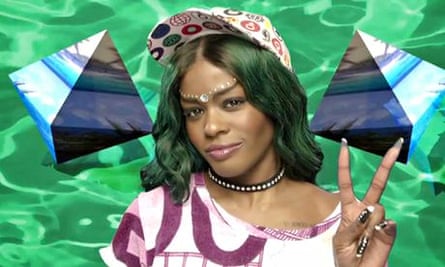
Either way, I have literally no idea whether a video by rappers Serious Thugs – YouTube comments: "THIS IS THE FUTURE", "chavvy meets hipster is happening!" – is a genuine attempt to reclaim the reviled "chav" image that might end up having wider impact, or whether it's just horrible tongue-in-cheek sneering at the way working-class kids dress. Is a Tumblr star such as Molly Soda – an American 24-year-old with dyed hair and a septum piercing, whose website is a curious mix of nostalgic imagery from the early days of the internet, glittery My Little Pony kitsch, softcore porn and photos of her pulling faces and occasionally exposing herself, and who recently seems to have translated her online fame into a visual-art career (an eight-hour video of her reading the contents of her email inbox was recently sold by Phillips in New York) – at the head of a subculture? On the one hand, it's a little hard to put your finger on what she does or stands for. On the other, she certainly has acolytes, who dress like her and imitate her Tumblr's aesthetic (indeed, she has them in such profusion, that they're parodied on another Tumblr called Molly Soda Try-Hards). Furthermore, her influence appears to be affecting mainstream culture: the clothing chain Urban Outfitters recently ran a blogpost telling customers how to achieve a Molly Soda-inspired "Tumblr girl look", albeit as – oh dear – a Halloween costume rather than an ongoing lifestyle.
And then there's seapunk, a movement that started out as a joke on Twitter, turned into a Facebook page, then gained traction to the point where it became a real-life scene, with a seapunk "look" that involved dyeing your hair turquoise, seapunk club nights and seapunk music. "Seapunk is the name of a mid-western club movement created by a group of turquoise-haired twentysomethings who like to drown warehouse breakbeats in a flood of sub-bass and watery Wu-Tang samples," ran one piece in style magazine Dazed And Confused. "The term was originally envisioned in a psychedelic GIF dream by Lil' Internet, but producer Fire For Effect has been responsible for turning it into a fully fledged lifestyle." Before you dismiss that as sounding like something made up by Charlie Brooker for a forthcoming series of Nathan Barley, it's perhaps worth noting that seapunk genuinely appeared to make an impact on mainstream pop: the seapunk look was variously appropriated by rapper Azealia Banks, Lady Gaga, Rihanna and Taylor Swift. In any case, I'm too late. One of seapunk's supposed core members, Zombelle, apparently declared the movement dead when pop stars started cottoning on to it, which perhaps tells you something about subcultures in 2014. They catch people's imagination, get appropriated by mainstream culture then die away: it was ever thus, but now it happens at warp-speed. Punk's journey from the first sightings of the Ramones and Richard Hell in New York to the front pages of the British tabloids took a couple of years, over which time it changed and developed and mutated. Seapunk's journey from internet gag to Rihanna using its imagery on Saturday Night Live took a matter of months.

It's hard not to be struck by the sensation that, emos and metalheads aside, what you might call the 20th-century idea of a youth subculture is now just outmoded. The internet doesn't spawn mass movements, bonded together by a shared taste in music, fashion and ownership of subcultural capital: it spawns brief, microcosmic ones. In fact, the closest thing to the old model of a subculture I've come across is Helena and the haul girls. Their videos are about conspicuous consumption: a public display of their good taste, carefully assembled with precise attention to detail. When you put it like that – and at the risk of incurring a fatwah from middle-aged Paul Weller fans – they sound remarkably like mods.

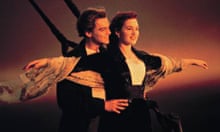
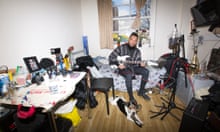
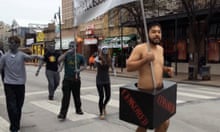
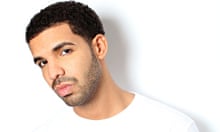

Comments (…)
Sign in or create your Guardian account to join the discussion